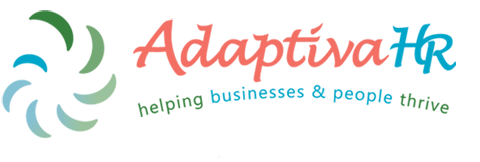Giving employees feedback vs. Riding a bike
I cannot count how many scenarios we are asked to help with that stem from a lack of addressing a performance concern at the earliest possible point in time. In fairness, I don’t track this kind of data, but also—the point is—it happens a lot. And, while the most common reason given is being too busy to pause and address the issue, a close 2nd (or possibly the #1 reason if we are all being honest) is how uncomfortable it is to do so.
Here’s my bike metaphor about that…
If you don’t know how to ride a bicycle (imagine you don’t if you do), it can look really intimidating as well as uncomfortable. It looks like the kind of experience where something very unpleasant could easily happen. Maybe you’ve heard stories about burning road rash from people who have wiped out, and maybe some of them have scars (I did for years!). And also, maybe if you could ride a bike your life would be enhanced in some way. Imagine you don’t have a car (unless you already do not) and you have to walk everywhere. If you could ride a bicycle, you could get to where you’re going with greater ease and efficiency. What if someone could help you learn to ride a bike? What if, instead of just getting on and fumbling around with it, you had a strategy?
The thing with learning to ride is, you can’t do it in your mind. You have to do it. You have to practice it. You have to keep at it even when your attempts are clumsy. It takes vulnerability, humility, and courage.
Let’s change gears (hah, see what I did there?!) to giving performance feedback. Everything about riding a bike applies—except hopefully the part about getting road rash. Unlike in the bicycle metaphor, the hazard of avoiding giving feedback (in a timely and useful way) is that the issue you are noticing is likely going to persist and even expand. But, like the bike metaphor, you can learn strategies that will help you do it with confidence and grace.
One strategy we often promote is called: Situation, Behavior, Impact, Request. We adapted this from the Center for Creative Leadership by adding the last part. Here is what it looks like:
Situation–Describe the specific situation in which the behavior occurred. Avoid generalities, such as “whenever we’re in a meeting…”
For example, “This morning at the 11 a.m. team meeting …”
Behavior–Describe the actual, observable behavior being discussed. Keep to the facts without inserting opinions or judgments.
For example, say, “You interrupted me while I was telling the team about the monthly budget,” instead of “You wouldn’t let me talk.”
Impact–Describe the results of the behavior. Try to be succinct and avoid going into “lecture” mode.
For example, “I felt frustrated when you interrupted me because it broke my chain of thoughts.”
Request–Make a clear request for a different kind of behavior. A “request” can be a statement. You don’t have to phrase it as, “Will you…?”
For example, “In the future, I would like you to hold onto your questions or comments until I have finished. Perhaps writing them down will help you remember them.”
When you put the whole thing together, it can be more conversational than how it is presented. You don’t have to strictly adhere to this sequence (S-B-I-R); just make sure you include each element. We do recommend you save the Request for after you have laid out the S, B, and I. If you lead with the request, the individual may react defensively because they don’t have the full context.
Lastly, as you are sharing this information, make sure you are giving WISE FEEDBACK. Wise feedback is given with the understanding that the ultimate goal is to support and help another person. It is not delivered in a way that is condescending or shaming. Feedback paired with compassion helps keep defenses down so the other person can take in what you are sharing.
Struggling with how to do all of this in real life? Be in touch. We can help.
